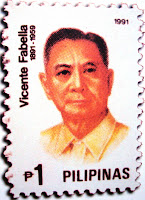The National Anthem of Sri Lanka
 "Sri Lanka Matha" is the national anthem of Sri Lanka. The words and music were written by Ananda Samarakoon in 1940 in the Sinhala language, and was officially adopted as the national anthem on November 22, 1951 by a committee headed by Sir Edwin Wijeyeratne.
"Sri Lanka Matha" is the national anthem of Sri Lanka. The words and music were written by Ananda Samarakoon in 1940 in the Sinhala language, and was officially adopted as the national anthem on November 22, 1951 by a committee headed by Sir Edwin Wijeyeratne.The first line of the anthem originally read: "Namo namo matha, apa Sri Lanka". There was some controversy over these words in the 1950s, and in early 1962 they were changed to their present form.
Ananda Samarakoon was born George Wilfred Alwis to a Christian family in Padukka, in Ceylon, on January 13, 1911 in Sri Lanka. In 1936, He had his primary and secondary education at Christian College, Kotte,presently known as Sri Jayawardenapura M.V.Kotte. His Sinhala Guru was Pandit D.C.P. Gamalathge. Later he served his Alma mater as a teacher of Music and Art. Samarakone left for Santiniketan in India to study art and music. After six months he abandoned his studies and returned to Sri Lanka, and changed his name to Ananda Samarakone, embracing Buddhism.
He was very much influenced by Rabindranath Tagore while in India and his fascination and the desire to imitate the great Indian musician would go on to take him in the direction of creating a musical tradition for the Sri Lankan people.
In 1937, the popular music of Sri Lanka comprised of songs derived from the North Indian Ragadhari music. These songs lyrics often contained meaningless phrases with little or no literary merit. Samarakone set out to create a form of a music that can be classified as Sri Lanka's own and came out with the song Endada Menike (1940) that paved the foundation for the artistic Sinhala music.
The love themed song unfolds in the form of a dialogue between a young village boy and a girl. It, poetic and beautifully rustic, became a success and Samarakone followed it with a string of successful songs in the early to mid 1940s, the period considered his golden age.
In 1945 Samarakoon's only son died at the age of five and the grieving Samarakoon left Sri Lanka for India where he pursued a painting career and held eleven art exhibitions there. Though his painting were critically acclaimed, he returned to music in 1951 back in Sri Lanka.
During Samarakoon's stay in India, one of his early compositions, Namo Namo Mata (composed in 1940, recorded in 1946) was nominated as the national anthem and was officially adopted by the State as the Sri Lankan national anthem in 1952. Critics attacked Namo Namo Mata, particularly the "Gana" significance of the introductory words (Namo Namo Matha) which designate disease and ill luck. Samarakone was not a believer in "Gana", and the criticism caused him to write numerous articles counter attacking his critics to defend his composition. However, without his consent, the introductory words were changed to "Sri Lanka Mathaa" so that the "Gana" significance now would designate victory and prosperity.
On April 5, 1962, at the age of fifty one, Samarakoon committed suicide by taking an overdose of sleeping tablets. Samarakoon's legacy lives on in his music and in the musical style he created.
The stamp above features the anthem composer Ananda Samarakoon issued in 1989






